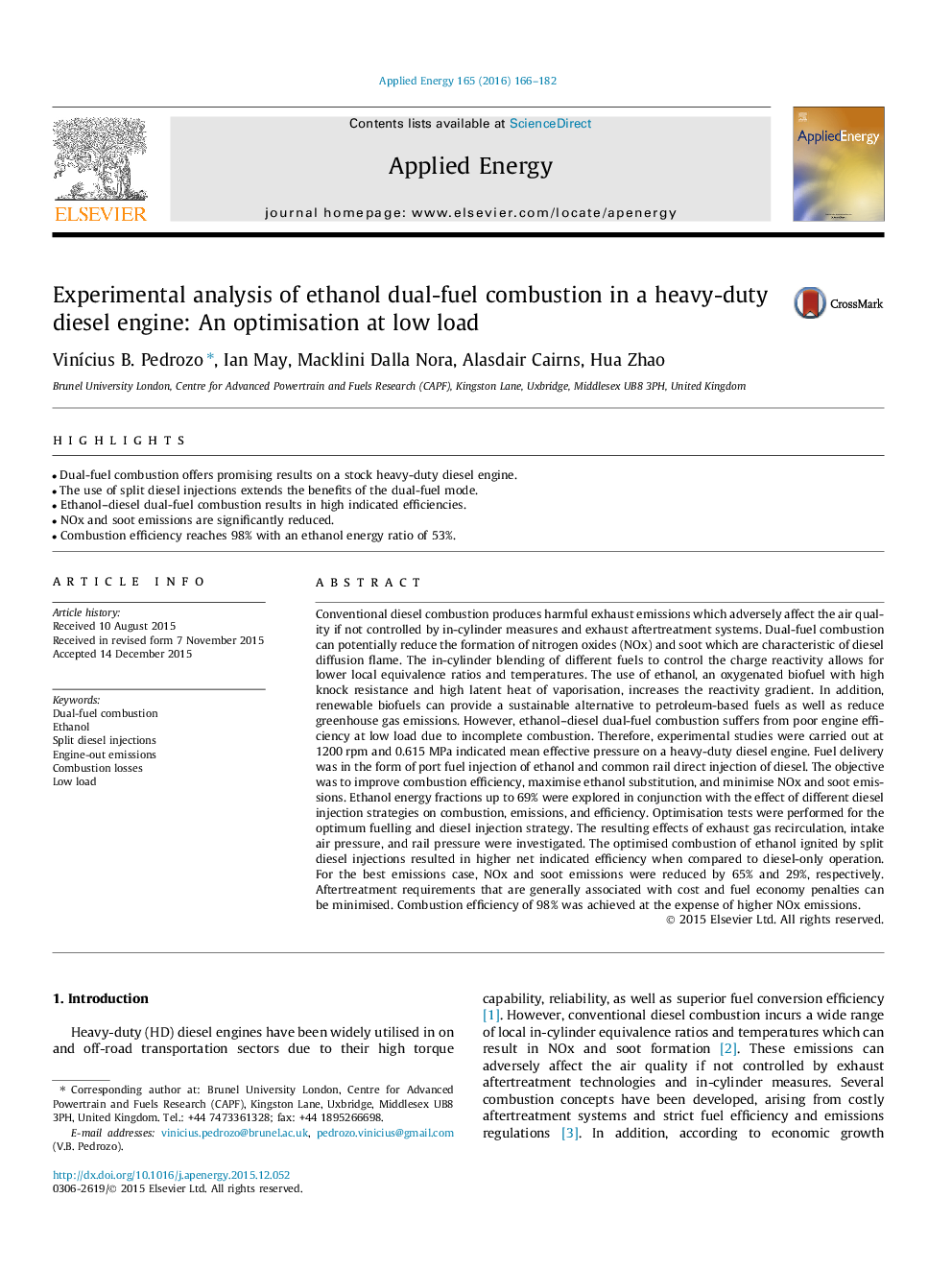| کد مقاله | کد نشریه | سال انتشار | مقاله انگلیسی | نسخه تمام متن |
|---|---|---|---|---|
| 6683919 | 501861 | 2016 | 17 صفحه PDF | دانلود رایگان |
عنوان انگلیسی مقاله ISI
Experimental analysis of ethanol dual-fuel combustion in a heavy-duty diesel engine: An optimisation at low load
ترجمه فارسی عنوان
تجزیه و تحلیل تجربی از احتراق دوگانه اتانول در یک موتور دیزلی سنگین: بهینه سازی در بار کم
دانلود مقاله + سفارش ترجمه
دانلود مقاله ISI انگلیسی
رایگان برای ایرانیان
کلمات کلیدی
احتراق سوخت دوگانه، اتانول، تزریق دیزلی تقسیم شده، انتشار موتور تلفات احتراق کم بار،
موضوعات مرتبط
مهندسی و علوم پایه
مهندسی انرژی
مهندسی انرژی و فناوری های برق
چکیده انگلیسی
Conventional diesel combustion produces harmful exhaust emissions which adversely affect the air quality if not controlled by in-cylinder measures and exhaust aftertreatment systems. Dual-fuel combustion can potentially reduce the formation of nitrogen oxides (NOx) and soot which are characteristic of diesel diffusion flame. The in-cylinder blending of different fuels to control the charge reactivity allows for lower local equivalence ratios and temperatures. The use of ethanol, an oxygenated biofuel with high knock resistance and high latent heat of vaporisation, increases the reactivity gradient. In addition, renewable biofuels can provide a sustainable alternative to petroleum-based fuels as well as reduce greenhouse gas emissions. However, ethanol-diesel dual-fuel combustion suffers from poor engine efficiency at low load due to incomplete combustion. Therefore, experimental studies were carried out at 1200Â rpm and 0.615Â MPa indicated mean effective pressure on a heavy-duty diesel engine. Fuel delivery was in the form of port fuel injection of ethanol and common rail direct injection of diesel. The objective was to improve combustion efficiency, maximise ethanol substitution, and minimise NOx and soot emissions. Ethanol energy fractions up to 69% were explored in conjunction with the effect of different diesel injection strategies on combustion, emissions, and efficiency. Optimisation tests were performed for the optimum fuelling and diesel injection strategy. The resulting effects of exhaust gas recirculation, intake air pressure, and rail pressure were investigated. The optimised combustion of ethanol ignited by split diesel injections resulted in higher net indicated efficiency when compared to diesel-only operation. For the best emissions case, NOx and soot emissions were reduced by 65% and 29%, respectively. Aftertreatment requirements that are generally associated with cost and fuel economy penalties can be minimised. Combustion efficiency of 98% was achieved at the expense of higher NOx emissions.
ناشر
Database: Elsevier - ScienceDirect (ساینس دایرکت)
Journal: Applied Energy - Volume 165, 1 March 2016, Pages 166-182
Journal: Applied Energy - Volume 165, 1 March 2016, Pages 166-182
نویسندگان
VinÃcius B. Pedrozo, Ian May, Macklini Dalla Nora, Alasdair Cairns, Hua Zhao,
